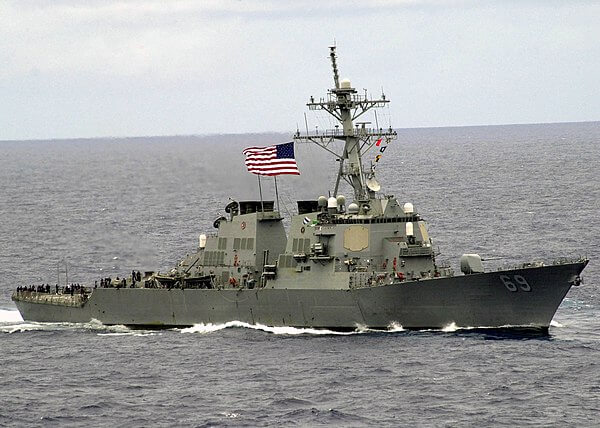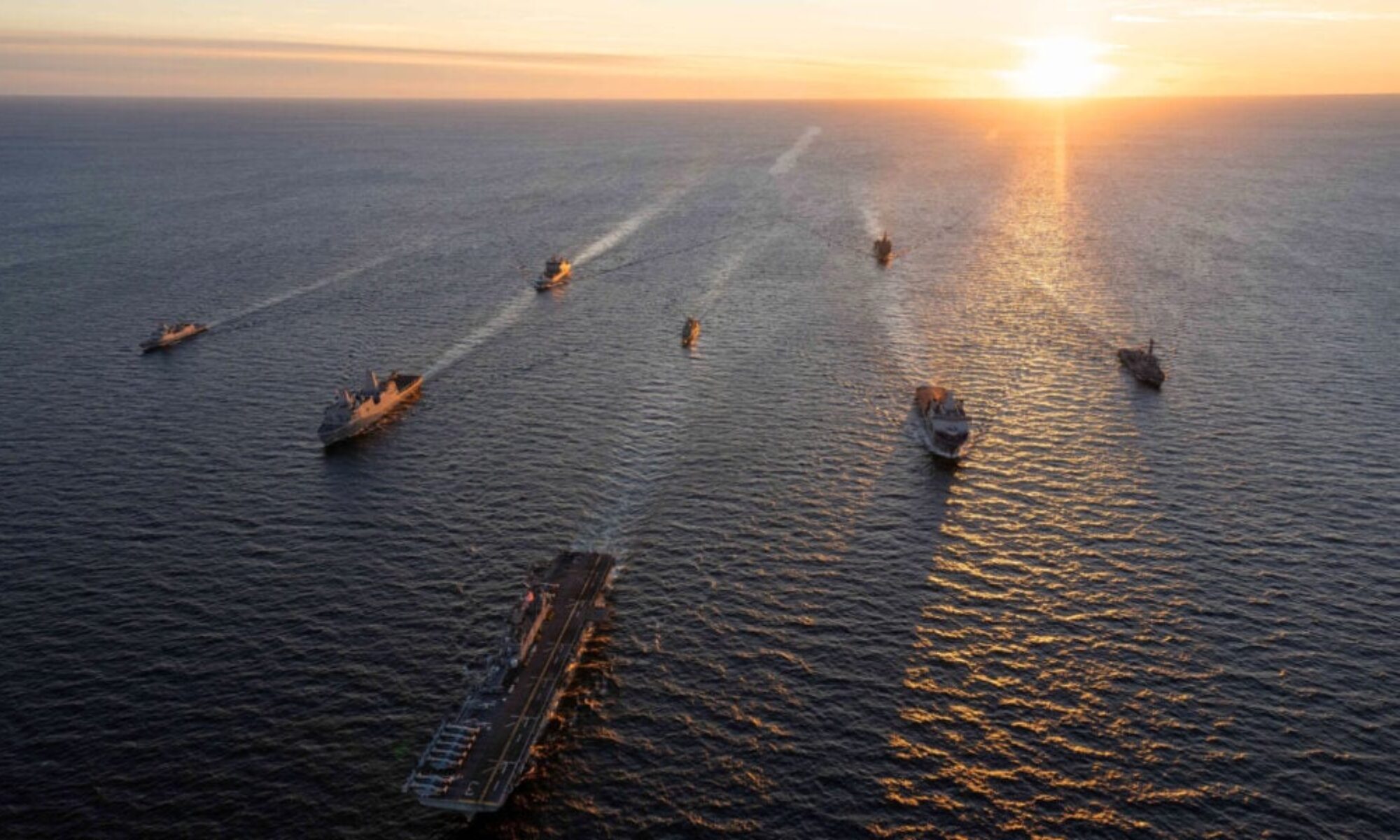.

U.S. rejects China’s claim that its warship illegally entered waters in the South China Sea.
China’s military said Thursday that it had monitored and driven away the USS Milius, a guided missile destroyer, around the Paracel Islands.
U.S. rejects Chinese claim that warship illegally entered waters in South China Sea.
Sailors on the USS Milius conduct an operation in the East China Sea on Monday. China accused the ship of illegally entering its territorial waters Thursday.
Washington has rejected Beijing’s claims that a U.S. warship was driven out of waters it illegally entered in the disputed South China Sea on Thursday.
China’s military said that the USS Milius, a guided missile destroyer, had “illegally intruded into China‘s Xisha territorial waters without the approval of the Chinese government.”
Chinese forces monitored, warned the vessel and drove it away, Tian Junli, a spokesman for China’s Southern Theater Command, said in a statement early Thursday.
He added that the United States was “threatening the peace and stability of the South China Sea region” and that Beijing’s forces would “always maintain a high state of readiness and take all necessary measures to resolutely defend national sovereignty and security and peace and stability” in the area.
But the American military swiftly disputed the Chinese statement.
According to Reuters, the U.S. Navy 7th Fleet said in a statement that the Milius “is conducting routine operations in the South China Sea and was not expelled. The United States will continue to fly, sail, and operate wherever international law allows.”
The Xisha Islands, also known as the Paracel Islands and as the Hoang Sa Archipelago in Vietnam, are a disputed archipelago of reefs and coral islands in the South China Sea.
USS Milius accused of entering disputed waters in the South China Sea.
The Paracel islands, which China considers part of Hainan province, pictured in 2018. Several nations lay claim to the disputed South China Sea region.
In its daily news briefing, China’s Foreign Affairs Ministry underlined Beijing’s position that an American ship had breached its waters, calling on the U.S. to “stop such provocations.”
“China will take all necessary measures to safeguard its sovereignty and security and uphold peace and stability in the South China Sea,” spokesman Wang Wenbin said.
Geopolitical tensions have been high in the strategically important waterway for years, with frequent flashpoints between the world’s two largest economies.
In July 2021, China accused another American warship, the USS Benfold, of entering what it considers its territorial waters near the Paracel Islands.
NBC News was on board a U.S. patrol plane last month as a Chinese fighter jet flew alongside 500 feet away for more than an hour.
China, which has the world’s largest navy, claims sovereignty over most of the South China Sea despite a landmark 2016 ruling by an international tribunal that its claims have no legal basis. Its stance has antagonized a number of countries in the region with which it has territorial disputes.
The U.S. and many of China’s neighbors accuse Beijing of using “gray zone” tactics that are not legally acts of war to intimidate other countries and assert greater control over the area. In response, the U.S. regularly conducts “freedom of navigation” and other operations in international waters and airspace.
The Milius is named after Capt. Paul L. Milius, a U.S. airman whose aircraft was presumed destroyed over Laos during the Vietnam War in 1968.
The ship is capable of conducting anti-air, anti-submarine, surface and strike warfare simultaneously, according to the Navy website.
The United States has rejected China’s claim that the USS Milius, a guided missile destroyer, illegally entered its territorial waters in the disputed South China Sea on Thursday. China’s military said that it had monitored and driven away the warship around the Paracel Islands, but the US Navy’s 7th Fleet disputed this, stating that the Milius was conducting routine operations and was not expelled. The Xisha Islands, also known as the Paracel Islands, are a disputed archipelago of reefs and coral islands in the South China Sea. Geopolitical tensions have been high in the strategically important waterway for years, with frequent flashpoints between the world’s two largest economies.
The Paracel Islands, also known as the Xisha Islands, are a group of islands, reefs, and atolls located in the South China Sea. They are situated approximately equidistant from China and Vietnam and are claimed by both countries, as well as Taiwan.
The history of the Paracel Islands is disputed, with various countries claiming sovereignty over the islands at different points in history. The islands were first recorded by Chinese sailors in the Han dynasty (206 BCE – 220 CE) and were later claimed by the Ming dynasty (1368–1644). In the 19th century, European powers began to take an interest in the region, with France claiming the islands in 1933 and Japan occupying them during World War II.
After the war, China regained control of the islands, but they were later occupied by South Vietnam in 1956, which was backed by the United States. After the fall of Saigon in 1975, the islands came under Vietnamese control, and China has since contested Vietnam’s sovereignty over the Paracels.
The dispute over the Paracel Islands is rooted in historical claims, but it is also tied to the strategic importance of the region. The South China Sea is a major shipping route, and the islands are located near important oil and gas fields. China’s claim to the Paracel Islands is part of a broader claim to most of the South China Sea, which is contested by several Southeast Asian countries.
The Paracel Islands have been the site of several naval confrontations between China and Vietnam. In 1974, China launched an attack on Vietnamese forces on the islands, killing over 70 soldiers and seizing control of the archipelago. In 1988, the two countries clashed again when China sank several Vietnamese ships near the Spratly Islands, another disputed territory in the South China Sea.
More recently, the United States has become involved in the dispute over the Paracel Islands. The US has conducted freedom of navigation operations in the region, challenging China’s claims to the islands and asserting its right to sail through the region’s international waters.
In conclusion, the history of the Paracel Islands is complex and disputed, with various countries claiming sovereignty over the islands at different points in history. The dispute over the islands is tied to their strategic location in the South China Sea, which is a major shipping route and a source of oil and gas reserves. The dispute has led to several naval confrontations between China and Vietnam and has drawn in the United States, which has conducted freedom of navigation operations in the region.

